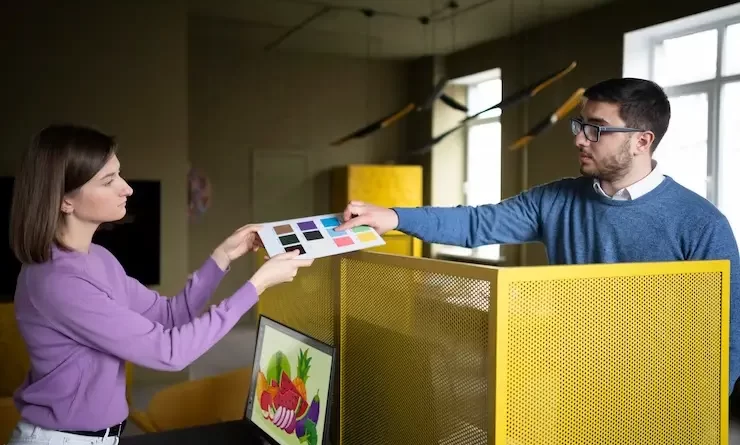Everything You Need to Know About Printing Off Your Branding Materials
The world is online, which means, ironically, one of the best ways you can stand out is to bring your business back to earth. Go to trade shows, set up shop in markets, attend markets, meet clients in person – all of these steps can help you really connect with customers. It’s hard to compete for attention, after all, when there are thousands of competitors vying for space on their screens. If you want to stand out now and make that great first impression that will matter, you need to do it in person.
What You Should Print Off
Marketing materials are a no-brainer, but they are far from the only things that you should print off if you want to make a lasting impression. Don’t think that you can sneak away with handing out business cards alone, either. Value is where it’s at, and a great way to show that value is through content. This means printing off a portfolio example, your white paper, and so on. If you’re a research company attending a conference or trade show, for example, having printed report summaries to hand out to interested parties can offer them great value that they’ll remember and look back to.
Design
Before you start printing, it is important to have a well-designed template for your branding materials. This includes a logo, typography, and color scheme that are consistent across all materials. Your design should be eye-catching and professional, but also reflect the personality and values of your brand.
Format
Format is going to play a crucial role when it comes to printing off your marketing materials, even documents you’ve put together in Microsoft Word or Pages. The how and why ultimately boils down to the type of printer doing the job at hand. If it’s a standard office printer, then you can easily just send those documents onward. If there are high-quality images involved and you really want your documents to come out crisp and clear, then you’ll want to upgrade the document file from the .txt, .doc, or .pdf file into a JPEG.
It’s essential you know how to turn a PDF into a JPEG on Mac or Windows properly. There are several different options available to you, which can come in handy, particularly if you only have a PDF file on hand and not an editable file.
Resolution
To ensure that your branding materials look sharp and professional, it is important to use high-resolution JPEGs. Low-resolution images can appear blurry or pixelated when printed, which can negatively impact the overall quality of your materials. Aim for a resolution of 300 DPI or higher to achieve the best results. If possible, try to either set that DPI during the design process, or, alternatively, create your designs at a higher DPI. It’s easier to downgrade or compress an image and get good results than trying to upscale the image.
Printing Methods
There are several printing methods to consider when printing your branding materials. The most common methods include digital printing, offset printing, and letterpress printing.
Digital printing is a popular choice for small print runs, as it is cost-effective and allows for easy customization. Digital printers can print on a variety of materials, including paper, cardstock, and vinyl.
Offset printing is a traditional printing method that is ideal for larger print runs. This method involves transferring ink from a plate to a rubber blanket, which is then transferred to the printing surface. This method is known for producing high-quality, consistent prints.
Letterpress printing is a unique printing method that involves pressing inked type or images onto paper. This method produces a tactile and textured print, but is more expensive than other printing methods.
Paper Type
Choosing the right paper type is crucial when printing branding materials. The paper you choose should reflect the quality and personality of your brand. There are several factors to consider when choosing paper type, including thickness, texture, and finish.
Thicker paper can make your branding materials feel more substantial and professional, while textured paper can add a tactile quality to your materials. Finishes such as gloss or matte can impact the overall look and feel of your materials.
Final Touches
After printing, you may want to consider adding final touches to your branding materials. This can include adding a varnish or coating to protect the materials from wear and tear, or adding a special finish such as foil stamping or embossing to add visual interest.

